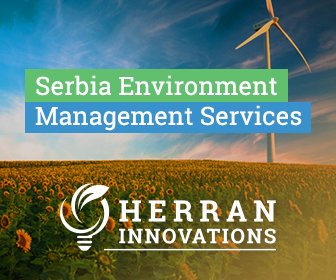Fish prices rose by 17.9 percent in February compared to the same month last year, according to data from the Republic Bureau of Statistics. Due to the price, ie the purchasing power of the population, the average consumption of fish in Serbia is five out of six kilograms per capita, which is three to four times less than the European and world average.
The total consumption of fish in Serbia in recent years is between 35,000 and 50,000 tons per year, and imports are growing steadily. According to the amount of fish produced, we are approximately in the middle compared to the EU members, and 12 members of the European Union have lower production than our country.
The national team for the revival of Serbian villages told returnees from abroad that investing in fishing can be very profitable. Serbia has 15,000 hectares of fishponds, and fish imports cost 50m euros a year.
Exports of fish from Serbia are mainly based on fish products (namely the processing of imported sea fish) and in recent years has grown significantly, from 697 tons worth $ 4.1 million in 2012 to 2,095 tons exported in 2018 worth of $ 17.5 million.
Analysts point to the need to increase fish production and join specialized fishing cooperatives.
“Serbia could once again be a major exporter of caviar, as it was several decades ago, when it exported two to three tons of that specialty to the United States and other countries at a price of $ 900 per kilogram and earned more than $ 2.5 million.” Kladovo caviar has been served in European courts for centuries. Due to the construction of two Djerdap hydroelectric power plants, the Negotin caviar has a chance today “, explains analyst Branislav Gulan.
He adds that fish and fish specialties can be more interesting and profitable offer in the menu of agricultural farms engaged in rural tourism.
“The fact that three quarters of fish consumed by Serbian citizens are imported and that the state allocates huge financial resources for that indicates the need to increase production, which would reduce allocations for freshwater fish imports by about ten million dollars a year,” said our interlocutor.
He states that the resources for fish farming are huge and that in Vojvodina alone there are more than 100,000 hectares that cannot be used for other purposes, and are suitable for the construction of carp ponds.
Fisheries in numbers
There are 149 registered fishponds in Serbia, of which 77 carp, 68 trout and four sturgeon ponds. There are 518 registered agricultural farms for fish production, of which only fish are raised by 126 farms, while 392, in addition to fishing, are also engaged in farming, fruit growing, livestock.
More than 90 percent of fish production is dominated by carp and brown trout. In addition to these two species, catfish, perch, pike, white and gray silver carp, grass carp, baboon and tench in carp ponds and brown trout, juvenile and grayling in trout ponds, as well as sturgeon and Siberian sturgeon. The catch from open waters of about fifty species that are caught is dominated by: carp, catfish, perch, pike, white and gray silver carp, grass carp, bream and baboon.
As he reminded, fish production in Serbia, according to expert estimates, can increase by 100 percent, with well-designed export of freshwater fish products.
“Cooperative associations should be encouraged, because today Serbia has only three specialized fishing cooperatives. There is a huge deficit of more than 1.5 million tons of fish in Europe and its consumption in Europe and the world is constantly growing. In Serbia, there are large unused available water resources (rivers, streams, lakes, canals, groundwater), and we also have raw materials such as wheat, corn, barley, soybeans for fish food production. “There are large capacities for the production of extruded fish food,” Gulan emphasizes.
The agricultural fishery could ensure its existence by producing at least 10 tons of fish, which in terms of trout production can be achieved on an area of 250 square meters, or five hectares of carp pond (in semi-intensive production), or 1.5 hectares in intensive production.
Investments in ponds depend on the configuration of the terrain, the quality of the land, the proximity of water supply sources, the proximity of the road and the possibility of connection to the electricity network, the type of materials from which it is built. According to the experts of the National Team, the funds invested in the construction of the pond can be returned in four to six years, Biznis reports.









